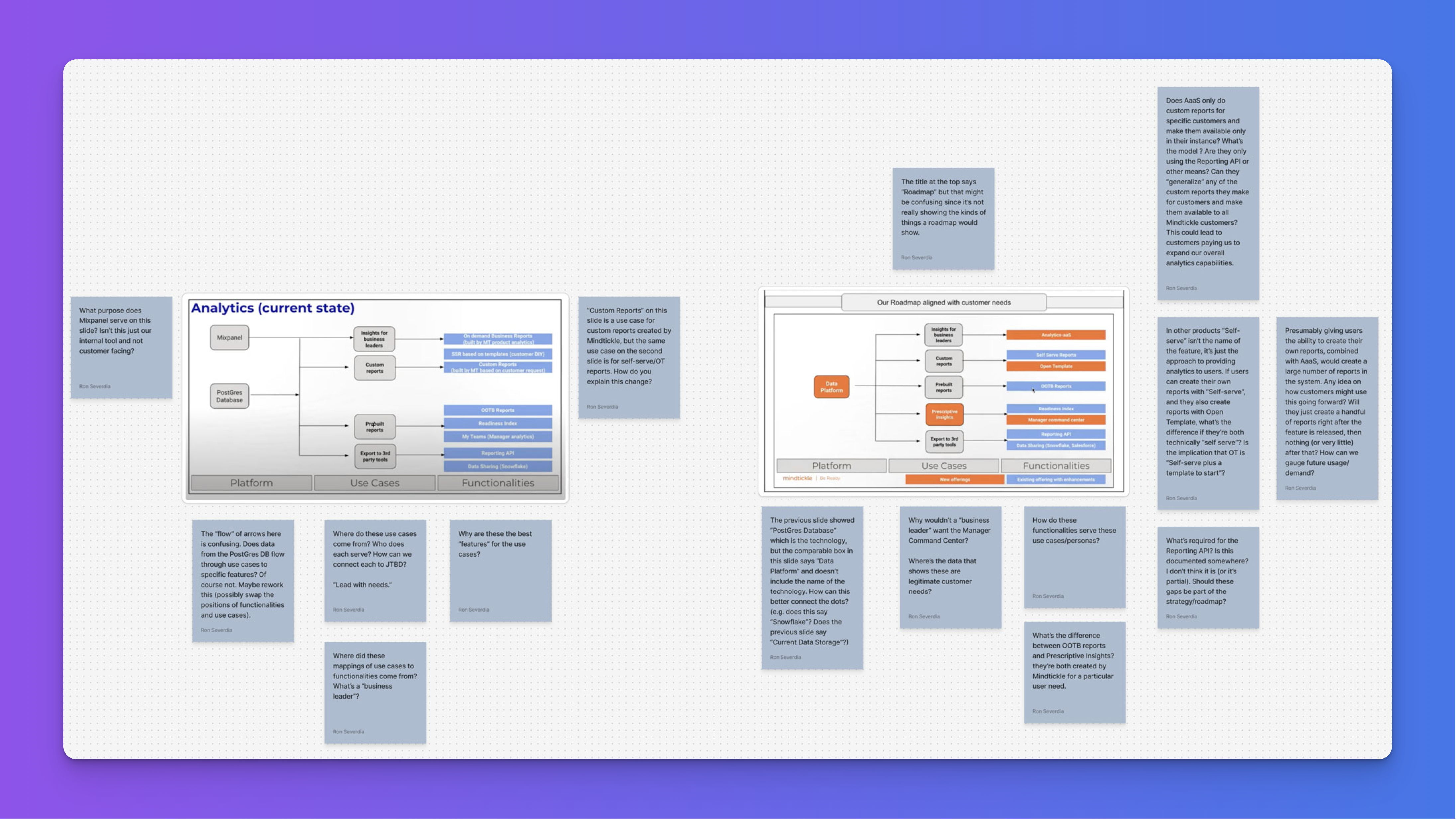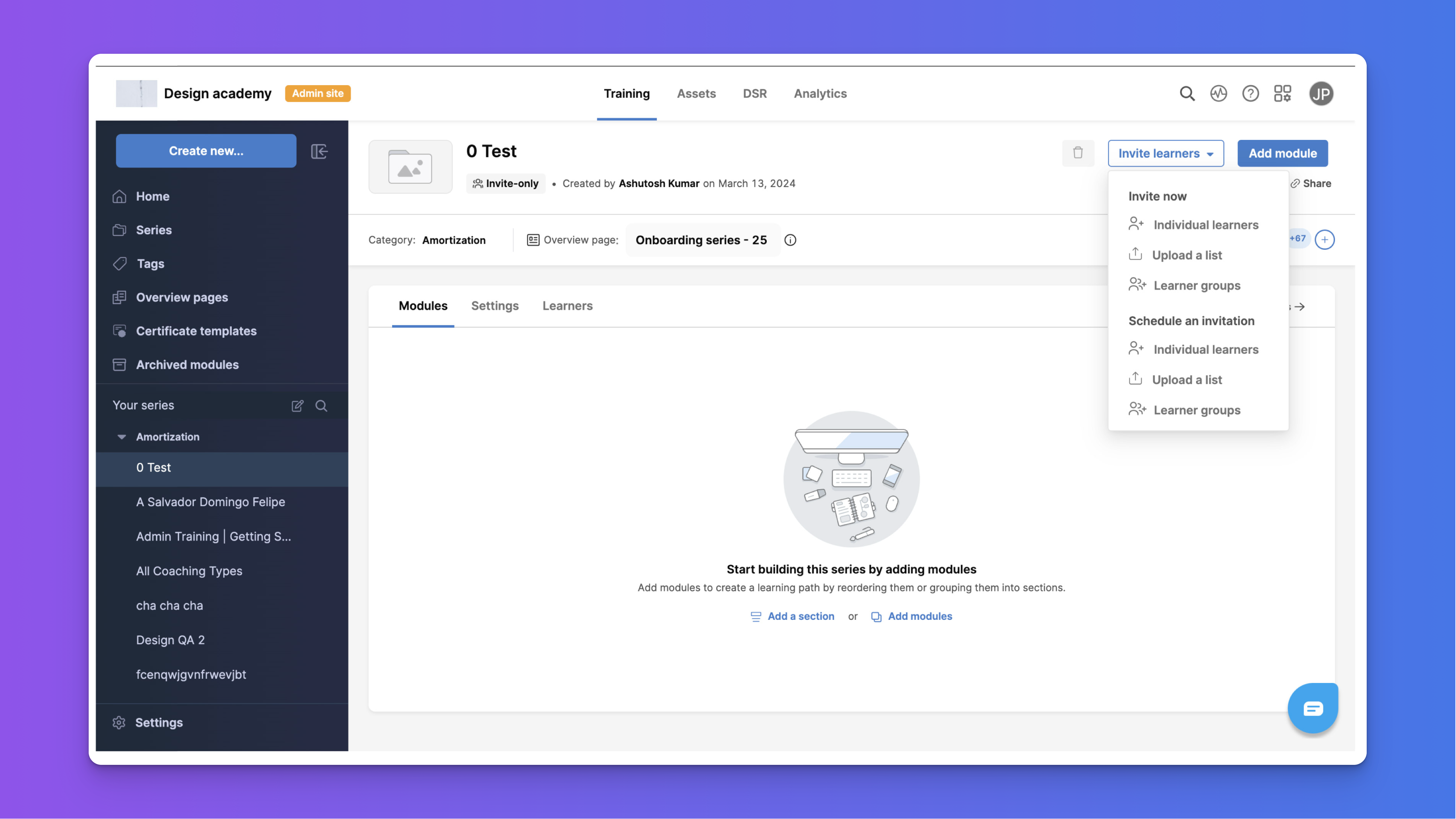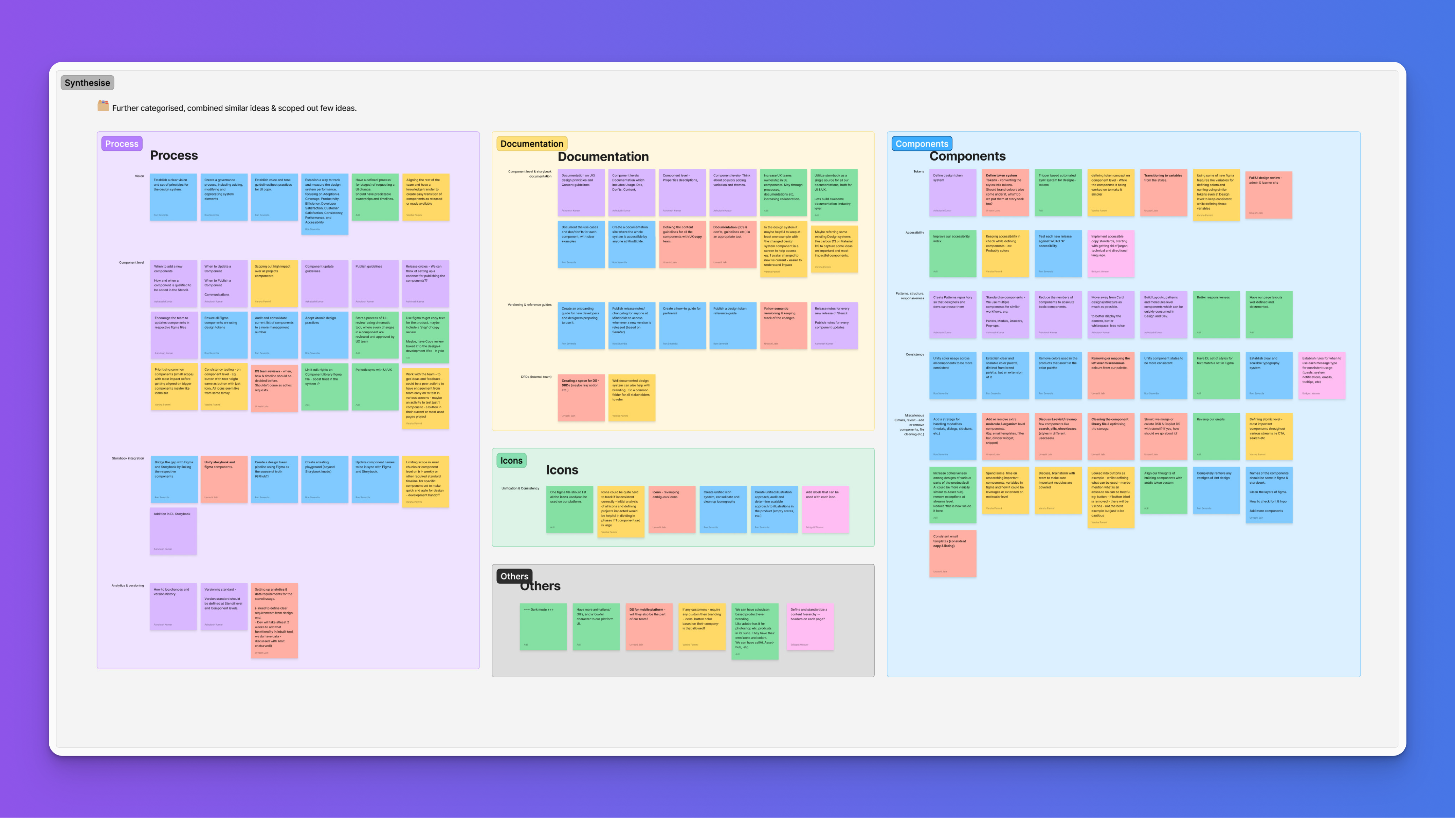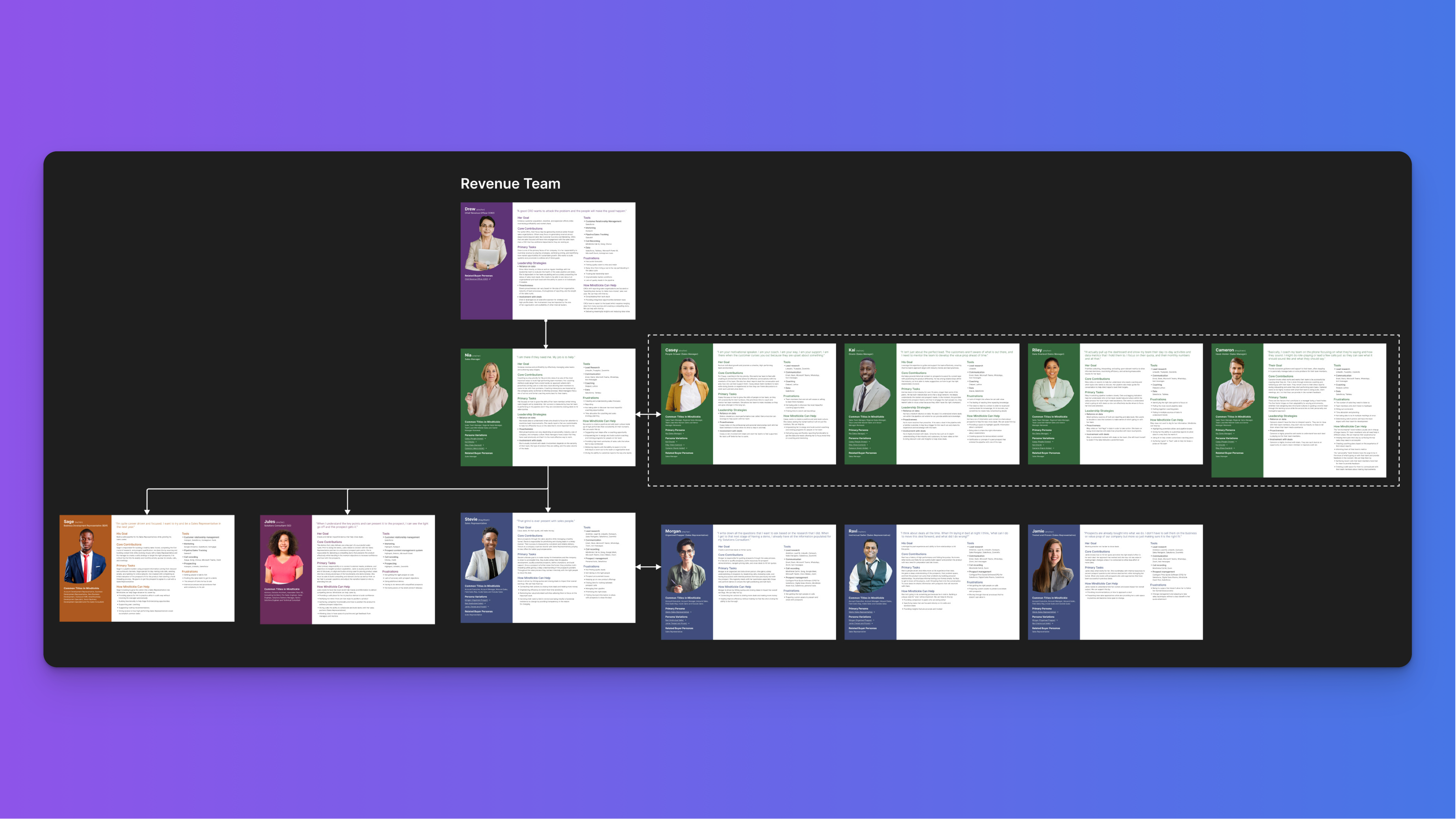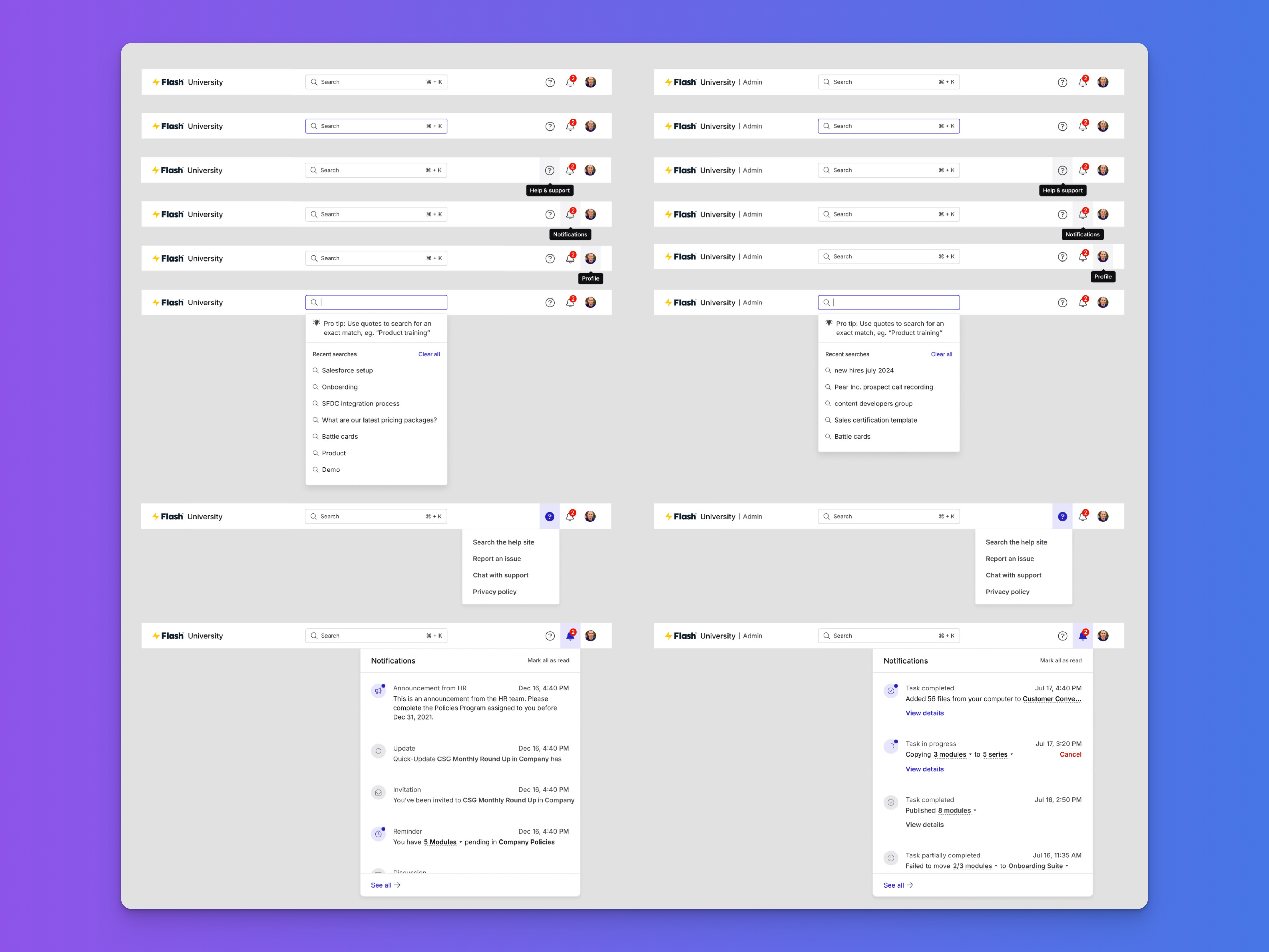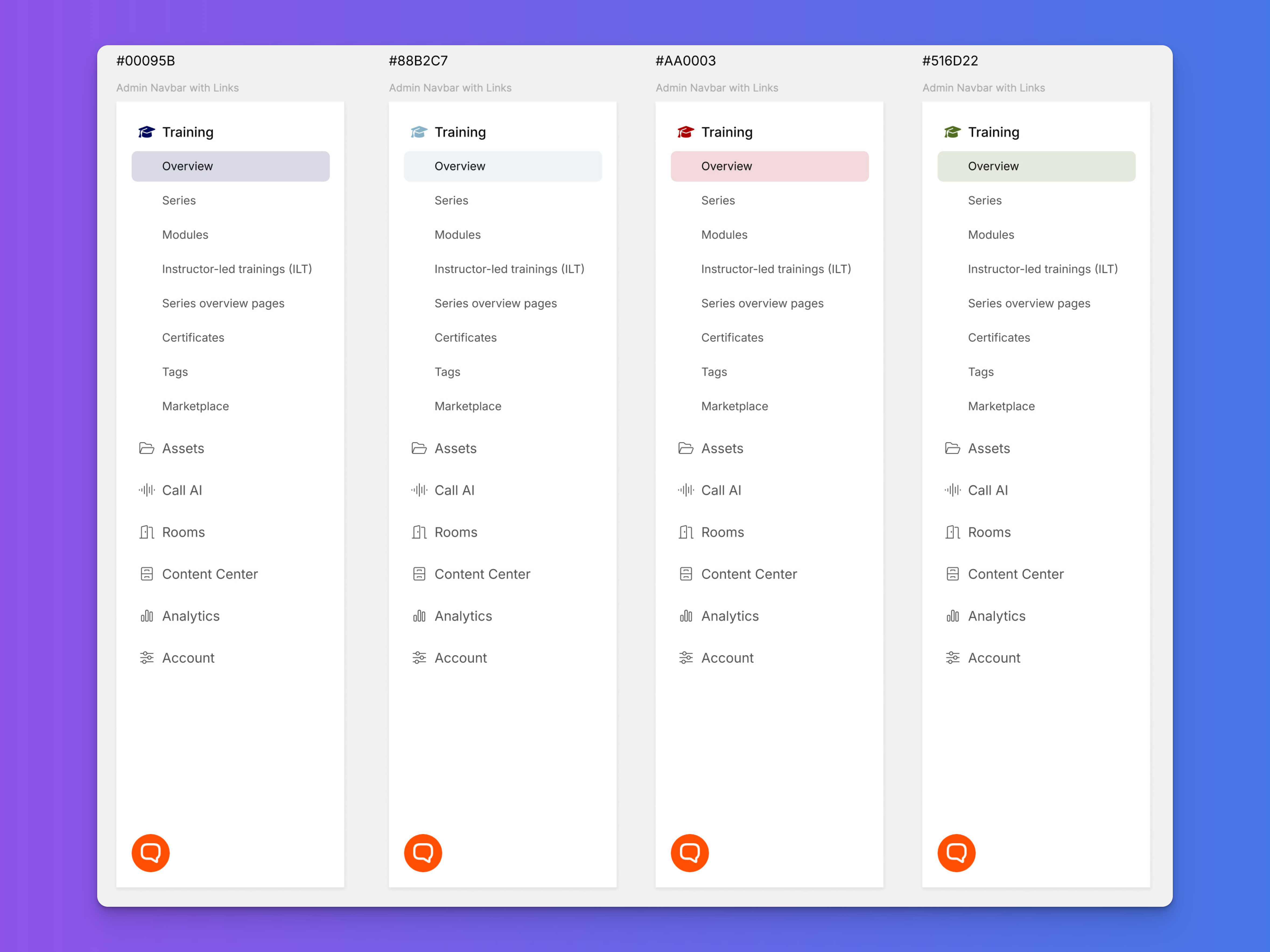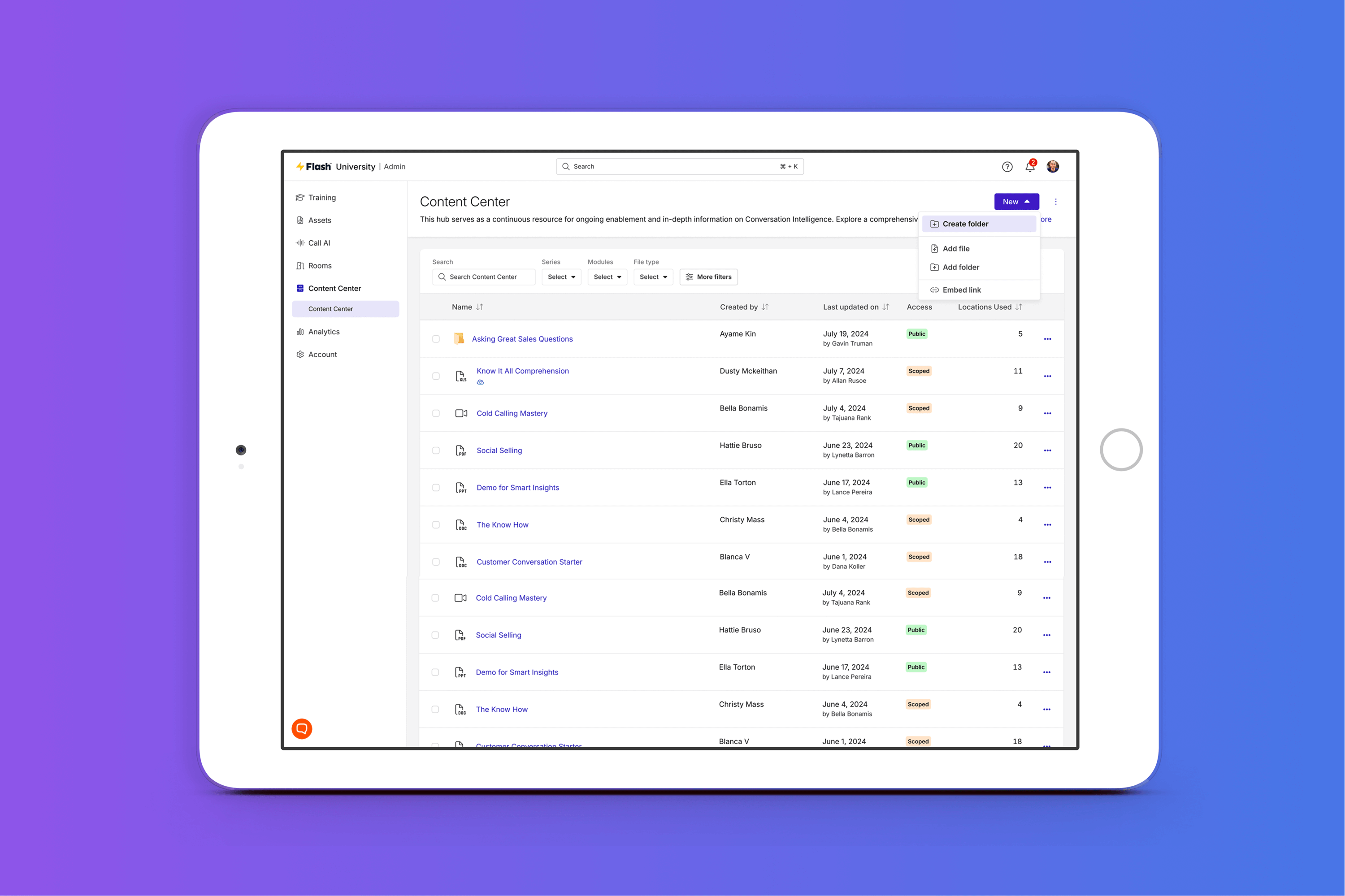
Driving Change and Developing AI-powered Workflows
The Challenge
Mindtickle, a leader in sales readiness and enablement, had reached a critical inflection point in its growth journey. While successful as a startup, the company was experiencing growing pains as it scaled to serve enterprise customers with increasingly complex needs. Several key challenges had emerged:
- Lack of standardized processes in product design and development, causing inconsistencies.
- UX lagged behind the increasingly complex needs of enterprise customers.
- Artificial Intelligence, though strategically important, was fragmented and poorly integrated.
- Customer onboarding required extensive manual setup, slowing adoption and increasing frustration.
- Organizational resistance to change from startup to enterprise readiness.
I determined that without addressing these fundamental challenges, Mindtickle risked falling behind competitors and limiting its enterprise market growth. The task required not only redesigning interfaces but also building stakeholder trust in design as a strategic function.
The Strategy
Based on my research findings, I developed a comprehensive strategy centered on three key pillars to transform Mindtickle's product experience:
- AI-First Approach: Reimagine the product experience with artificial intelligence as the foundation, not just a feature. This meant creating contextually aware systems that proactively serve users what they need based on their role, historical usage patterns, and program objectives. The AI would continuously learn from sales activities, analytics insights, and enablement program data to deliver increasingly personalized experiences.
- Design System Revitalization: To address inconsistencies and improve development efficiency, I directed the revitalization of the design system with clear governance, documentation, and adoption protocols. This decision was driven by my analysis of UI inconsistencies and their impact on user experience.
- Change Management Framework: To facilitate organizational buy-in and successfully navigate the shift from startup to enterprise, I introduced structured change management. Clear cross-functional processes, metrics for success, and feedback loops ensured alignment and continuous improvement.
This strategy balanced long-term improvements with quick wins, building internal momentum and demonstrating tangible value to customers, especially those approaching renewal decisions.
The Process
Phase 1: Research & Alignment
- I conducted and directed extensive user research to quantify personas and document Jobs to Be Done across different customer segments and roles
- Led collaborative workshops with cross-functional teams to create visual journey maps highlighting pain points and opportunities, bringing diverse perspectives together to align on priorities
- Personally contributed ideas and UX directions in Figma during early ideation sessions, demonstrating conceptual possibilities and providing practical mentorship to the design team
- Established OKRs and measurement systems to track team performance, providing visibility into which initiatives were succeeding and where adjustments were needed
- Directed a thorough UI audit for inconsistencies, prioritizing issues based on user impact
Phase 2: Strategic Redesign
- Identified and prioritized high-impact UX improvements using customer feedback and usage analytics
- Facilitated Google Design Sprints with product, design, engineering teams and stakeholders to brainstorm and align on solutions for high-impact areas
- Through hands-on ideation in Figma, I conceptualized the "AI Anywhere" framework, combining search and chat capabilities into a unified experience
- Redesigned the onboarding experience to reduce time-to-value, incorporating AI-powered setup recommendations based on customer profile and industry patterns
- Simplified common workflows (program management, analytics, content creation), reducing cognitive load and enhancing productivity.
- Engaged key customer stakeholders in feedback sessions at strategic intervals, particularly approaching renewal timeframes, to demonstrate progress and build confidence
Phase 3: Implementation & Scaling
- Executed a tiered rollout balancing technical complexity and user impact
- Personally drove the revitalization of design system documentation and established clear governance processes
- Established training for product and engineering teams, promoting adoption of standardized components
- Implemented new feedback mechanisms to capture user sentiment about specific features and experiences
- Established an AI ethics review process to ensure responsible development as AI capabilities expanded across the platform
Throughout the process, I maintained close communication with key stakeholders, sharing our vision and incorporating their feedback to overcome entrenched thinking and build advocacy for the new direction.
The Results
The transformation initiative I led delivered significant improvements in both quantitative metrics and qualitative customer satisfaction:
- Immediate positive user feedback on UI improvements, citing substantial efficiency gains
- Common workflows (onboarding, analytics reports, content management) streamlined—measurable time savings across user segments
- The unified AI search and assistance capabilities saw rapid adoption, with 88% of users engaging with the feature within the first month of release
- Onboarding time for new customers decreased reducing implementation costs and accelerating time-to-value
- Internal development efficiency improved as teams adopted the revitalized design system, with a 35% reduction in UI-related defects and 28% faster implementation of new features
Beyond these tangible results, my transformative initiative established a lasting foundation for Mindtickle’s innovation and growth—positioning the company as a forward-thinking partner for enterprise sales organizations, powered by continuous, data-driven enablement.

